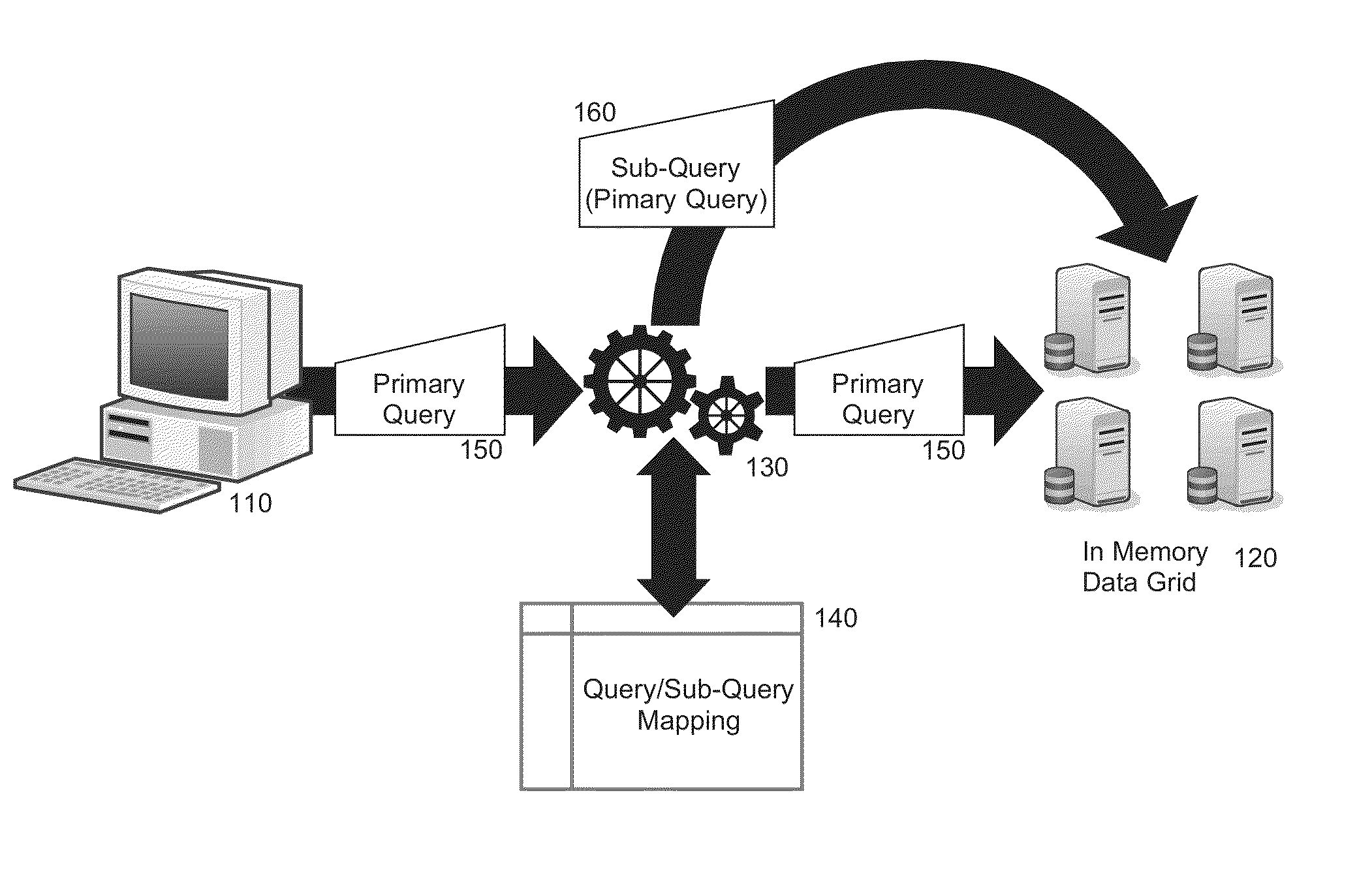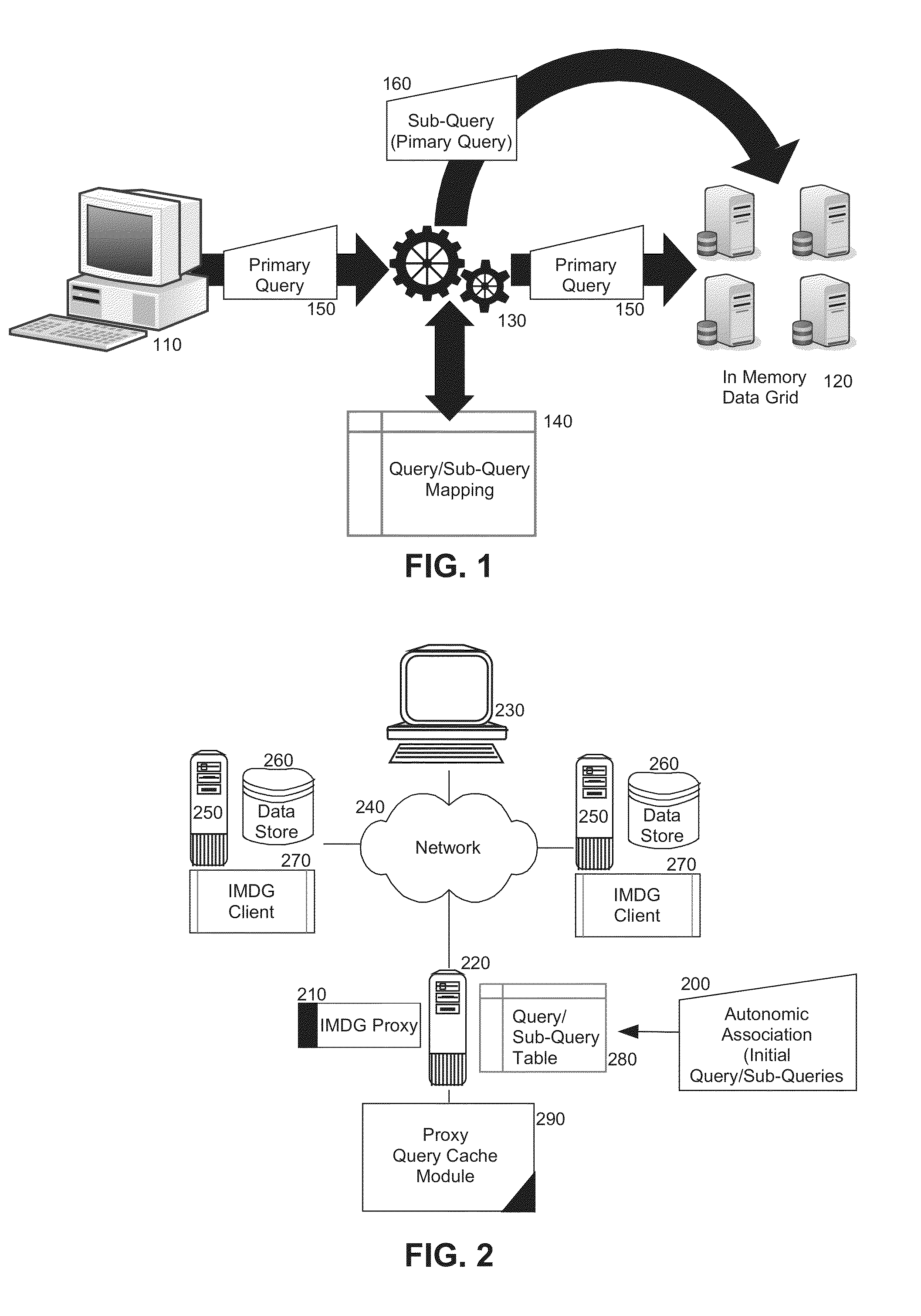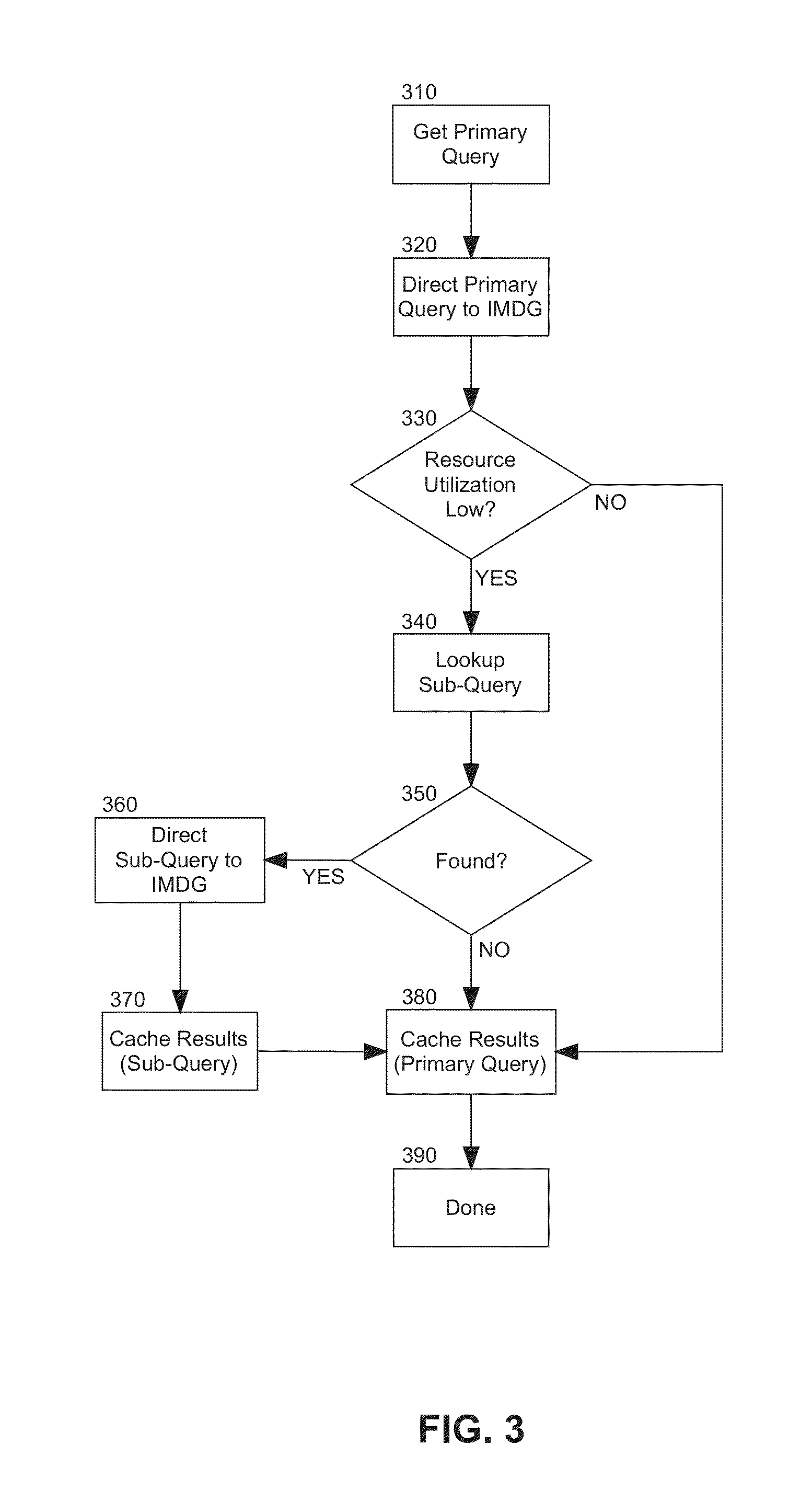Autonomic caching for in memory data grid query processing
a data grid and query processing technology, applied in the field of data caching database queries, can solve the problems of ineffective application of relational database concepts, inability to use relational database concepts, and inability to make use of traditional caching,
- Summary
- Abstract
- Description
- Claims
- Application Information
AI Technical Summary
Benefits of technology
Problems solved by technology
Method used
Image
Examples
Embodiment Construction
[0015]Embodiments of the invention provide for autonomic caching in an IMDG. In accordance with an embodiment of the invention, different primary queries individually can be mapped to one or more respectively different sub-queries related to the primary queries in association with an IMDG. For example, whenever a sub-query is requested in an IMDG using a portion of a result set from a previously requested primary query, the sub-query can be determined to relate to the primary query. Subsequently, when a primary query is received in the IMDG that maps to a related sub-query, concurrent with the processing of the primary query and prior to the request of the related sub-query, the mapped sub-query can be directed and results cached for use subsequent to the completion of the primary query. In this way, the related sub-query can be predictively directed without waiting for the completion of the primary query thus providing substantial temporal performance advantages.
[0016]In further il...
PUM
 Login to View More
Login to View More Abstract
Description
Claims
Application Information
 Login to View More
Login to View More - R&D
- Intellectual Property
- Life Sciences
- Materials
- Tech Scout
- Unparalleled Data Quality
- Higher Quality Content
- 60% Fewer Hallucinations
Browse by: Latest US Patents, China's latest patents, Technical Efficacy Thesaurus, Application Domain, Technology Topic, Popular Technical Reports.
© 2025 PatSnap. All rights reserved.Legal|Privacy policy|Modern Slavery Act Transparency Statement|Sitemap|About US| Contact US: help@patsnap.com



